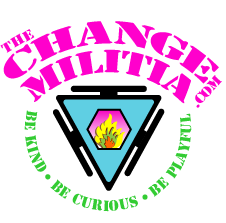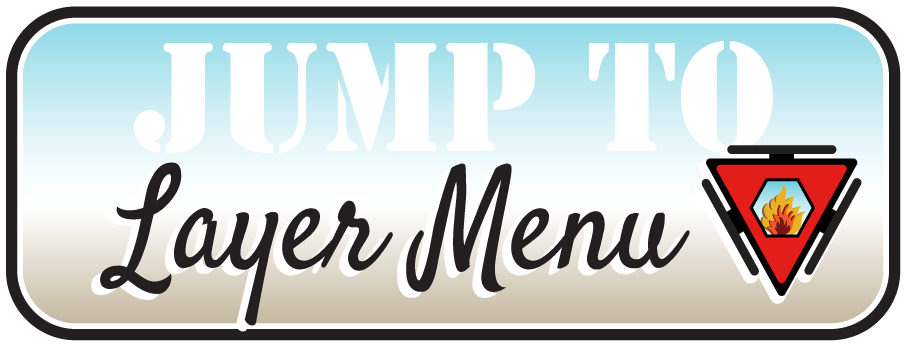Layer Twenty-One, Week Three – Sunday
- Read Week Three Concepts
- Watch videos and read description for The Dots – Chakra Two
- Do Movement – The Dots – Chakra Two
Sunday’s Focus
Start to become aware of your biases. What do you prefer? What do you disdain, despise, and disparage? What are you drawn too? What repels you? What do you judge as great, good, okay, not desirable, bad, awful, and disgusting?
Sunday’s Concepts
This week you will explore the power of bias. Bias is the conduit your subconscious mind uses to create priority and value. Let’s start where we left off in L21W2, Saturday Concepts:
Optimal balance requires a great deal of introversion. Not introversion in the common psychiatric sense but introversion in the prioritizing of internal sensation over external perceptions. Finding your optimal balance points takes a lot of sensorial awareness and major increases in sensitivity. To maintain your fluidity, you will prioritize your energetic awareness until it becomes a habit. Once it is a habit, you will prioritize increasing your energetic discernment, both internally and externally.
Feeling your chakra energy and auras will become second nature, like feeling heat and cold. You will learn to feel them internally and in others. It will change the nature of your relationships because you will be connecting with existing and changing energy configurations instead of assumptions, language, and gestures.
As you do, you will give less and less value to your projections, fears, and limiting patterns. You will give more value to identifying opportunities and moving toward them. Your Hara and Essence will collaborate to maximize your fulfillment and beneficial influence.
Biases are how your subconscious mind keeps the above from happening. Biases give value and priority to your projections, fears, and limiting configurations. Biases reinforce the narrowing of possibilities and reduce the possibilities for beneficial change. Biases keep you in familiar and inefficient patterns. Habits feed off biases.
If your today feels like your yesterday, thank your biases.
Peter Bilt loves his jacked-up tricked-out pick-up truck. He truly believes that the only vehicle worth owning is a truck. The first thing he does when seeing or meeting someone is to judge them by whether or not they drive and love pick-ups.
If they do, he lowers his defenses and begins to become aware of the other aspects of their being. He starts with the assumption that he is going to like them because, like him, they are truck people.
He has a pick-up bias. It allows him to connect quickly with other truck lovers. It preferentially lowers his resistance to relationships that meet that criteria. It also lets him focus on what else he might find about them to connect with.
Peter isn’t neutral. If you love trucks, you are his people. If you don’t love trucks, you are not his people. Non-truck lovers increase Peter’s resistance to connection. If you aren’t a truck lover, you will have to get past his initial wall. If you do, he will be looking for other reasons to reject you.
It is pretty easy to see Peter’s bias and how it limits his ability to be open and authentic. His fears, whatever they may be, have created his truck-lover bias. The bias creates two channels, one toward intimacy, the other rejection. There is never a neutral, centered, and grounded openness.
Monday’s Focus
Once you have identified some of your biases, see if you can connect them to a particular fear. Consider your biases origin and history. What gave birth to them and how did they gain value?
Monday’s Concepts
Let’s define bias as the default preferences of your subconscious mind. Your biases will be familiar, habitual, and rarely optimally beneficial. You, all of us, have thousands of biases. Everything we do, every action we take will be influenced by bias … or affected by the projection of other people’s biases.
Wanda is hyper-reactive to what others think. When Wanda reacts, she is reacting to her perception of the current environmental energy configuration. Her bias is to assume that the primary threats to her well-being will be external, so she puts most of her energy into interpreting what people are saying, doing, and their body language. Her environmental interpretations aren’t accurate. She is projecting her fears onto the movements, actions, responses, and reactions of others. As others express their fears, she over-reacts, assuming she has something to do with their fear expression. The value Wanda gives rarely matches the actual value or the value others are giving. Her hyper-reactivity inflates the value of things she fears.
Biases are the primary components of your belief system. Biases are inherently prejudicial. This is key. Their purpose is to limit potential, opportunity, action, and change. You don’t have biases that maximize your fulfillment, creativity, productivity, kindness, or love. Every bias you have reduces your ability to be present, aware, and responsive. Every bias has judgment, intolerance, and constrictions.
Every bias will have a built-in reaction cycle, a series of reactions that follow each other habitually. Your fears are always on the alert – these reaction cycles start with a defensive predisposition. Your subconscious mind is innately defensive, it is constantly looking for threats. It is predisposed to threat detection.
Once a potential threat is identified, your subconscious mind reconfigures and unleashes held fear energy to amplify the threat. It takes held energy and combines it with the current threat to make the current threat feel more threatening.
Reaction Cycle – Defensive Predisposition ➜ Amplify Threat ➜ Look for Trigger ➜ React (Dump Energy) ➜ Replenish Held Energy Stores ➜ Confirm and Reestablish Habitual and Familiar Defensive Predisposition.
In the short-term, most fear has limited influence. Energies get destabilized, rebalance, and carry on. In the long-term, fear creates reaction cycles. Reaction cycles are the building blocks of habits and biases … which leads to imbalance, injury, and disease. Reaction cycles are also how fears gain value. As fear co-opts chakras into being reactive, they start to prioritize threat detection instead of energy metabolization. More energy is put into worrying and less is put into doing … and productivity and efficiency wane.
Tuesday’s Focus
Begin to question your biases. To what degree are they an accurate representation of your core beliefs? How do they strive to reconfirm your fears?
Tuesday’s Concepts
You have biases and each of your chakras have a primary bias. A bias is your subconscious mind’s preference because it reduces the possibility of change – of moving into the unknown. Energetically, your subconscious mind influences the metabolization of energy in each of your major chakras. You will explore this in-depth next week.
As a reminder, remember that chakras are energy constructs or composites – smaller units of energy working collaboratively. Chakras are energies coming together to perform a task or function. As such, you have a whole-being chakra, the major chakras, minor chakras, organ chakras, chakras for each system, cell, and parts of each cell. Every molecule has a chakra.
And there are macro chakras as well. You have a family chakra, social network chakra, workplace chakra, neighborhood chakra and a country, species … generally, anything you could put into a group or give a label has a chakra. As a group, Red-haired Albanian lovers of techno-pop has a chakra. The Central Colorado Composting Collective has a chakra. Cable-knit sweater knitters have a chakra. Prenatal vitamin takers share a chakra. Conmen posing as Nigerian princes with money to send have a chakra. Your shame comingles with the shame of others through a shared chakra. Emotionally immature men with mommy issues have a shared chakra. Each of these groups resonates with a specific shared energy configuration. There is an energetic commonality.
People who stay in abusive relationships do so, in part, because they have become accustomed to the abuse. It has a familiarity. As such, it resonates. The abused and the abuser share a common energy configuration – they are both in an abusive relationship. Changing that resonance is hard. There is a flood of energy moving in abusive relationships. Redirecting that flooding energy requires presence, awareness, a strong Hara, and a big upwelling of Essence.
Most importantly, those habitual energy flows need an alternative expression, someplace new to go. The bodies of the abused have habituated to large influxes and exits of energy. Change requires that those cycles change. The easiest way is to redirect them – get off one dysfunctional rollercoaster and get on another, healthier rollercoaster. The process would continue toward finding and habituating to less energy intensive rollercoasters. Eventually, the habit will transform into a gentle ride toward improved health, increased fulfillment, and flourishing happiness.
Layer Twenty-One, Week Three – Wednesday
- Read Wednesday’s Concepts
- Do Movement – The Dots – Chakra Two
Wednesday’s Focus
Read Tuesday’s Concepts and reflect on your biases as possible reactionary cycles. How do your mental and emotional fears impact your physical and energetic bodies?
Wednesday’s Concepts
All non-beneficial reaction cycles, habits, dysfunctions, and patterns will be fear-based. Fear can inhabit any aspect of your being including your chakras.
Fears can influence chakras because the fears resonate, have similarity, with the general intention of the collaboration. Chakras intrinsically limit their scope. It is an essential part of their nature. They have a primary task, function, and intention. Physically, your stomach chakra continues the digestion and absorption of food that was started in the mouth and then transports the food mass to the small intestine. It does those things and excludes other things. It has a purpose. Makes sense, right?
Fears also have a scope and a focus. Your subconscious mind categorizes fears into things it can label and create hypersensitivities to.
The stomach chakra is a grouping of energies with a purpose. When healthy, the stomach, its chakra, and the enveloping aura maintain their collaboration and your digestion benefits. When something disrupts the collaboration, say … eating that two-week-old left-over shrimp enchilada out of the refrigerator, the energy gets unbalanced and the collaboration is inhibited. The stomach energy and the stomach respond by trying to purge the putrefactive bacteria-laced crustaceans.
Part of the collaboration of a chakra is to form functional boundaries. Digestion is a functional boundary. The stomach doesn’t try to do anything outside of its intended task. When circumstances hinder that ability, the chakra reacts or responds to try to regain optimal collaboration. It constantly reorganizes to try to maintain optimal efficiency in its intended trajectory … until fear shows up.
Fear alters the intention of the chakra by prioritizing potential threats. Without fear, chakras work to maintain optimal balance – they are focused on productivity, efficiency, trajectory, and success. Fear pulls energy away from those intentions and convinces the chakra that it needs to be worried about potential threats. The chakra starts putting more of its energy into being defensive … which leaves less energy to be productive.
Your stomach chakra helps with digestion. Physically, it helps to digest food, but it also helps in the digestion of energy, thoughts, and emotions. The stomach chakra will exist for each of the bodies. The chakras will occupy the same space in slightly different but overlapping realities. An example of this is when worry leads to physical nausea or long-term to ulcers. The mental, energetic, and emotional imbalance that goes along with worry influences the stomach’s physical chakra leading to dysfunction and disease.
If your worry and the accompanying imbalance persists, it will lead to diseases that affect the stomach. A persistent imbalance will always lead to disease or some degree of dysfunction. Worry may be instigated by mental and emotional imbalances, but it will cause physical effects. Worry is a reaction cycle. It takes a fear, prioritizes it, sucks energy into it, and uses it to confirm the underlying fear. Energy that is co-opted into fear reduces the amount of usable energy, weakening the cells, tissues, organs, and bodies.
Layer Twenty-One, Week Three – Thursday
- Read Thursday’s Concepts
- Do Movement – The Dots – Chakra Two
Thursday’s Focus
Begin to assess how much of your time and energy is spent expressing, monitoring, and managing your fears. What is the energetic cost of your biases?
Thursday’s Concepts
As you create reaction patterns, your cells, systems, and chakras start to look for them. They gain preference. That preference generates an implied value. If Verde Legume has a fear of green beans, everything that might be or resembles a green bean gets more of his attention than all the things that don’t. He is green-bean-centric. He is constantly out of balance because his energy is channeled into a narrow bandwidth. Things outside of that predisposition get less attention/energy.
So, first, there is an imbalance, which leads to fear, which results in a bias, which creates the illusion of value. You give preference to the things you value whether or not they have any actual value. Your set of assigned values make up your personality … which is a consequence of the original imbalances … which were caused by fears.
Your personality is the combined habituated expressions of your reaction cycles.
If most of what you do is governed by your subconscious mind, most of what happens is based upon the biases generated and habituated from your fears. You are not who you think you are or who you imagine yourself to be, you spend most of your time and most of your energy expressing, monitoring, and managing your fears.
Don’t take this personally, this applies to me too and everyone else you know. It is part of the human experience. But, don’t lose heart, it is something we can mitigate with awareness, practice, and tenacity.
The general path to improvement, which you should be able to guess, is to reduce the amount of energy you allow to go to your subconscious mind and increase the amount you allocate to your conscious mind. Be more responsive and less reactive.
Friday’s Focus
Which one of your biases is the largest drain of your time, energy, and momentum? What beliefs would you have to renounce to change your primary bias?
Friday’s Concepts
Held energy-constructs like trauma, resentment, anger, intolerance, and craving are held because fear has reserved real estate in a chakra/aura. Once it has a place to put it, fear starts storing resonate energies so that they are available to deploy when triggered.
Let’s look at abusive relationships from this standpoint. In every abusive relationship, there is a huge amount of fear. The abuser is so incredibly fearful, he or she goes into fight mode and attacks. The abused holds a tremendous amount of fear waiting for the next outburst.
Both the abuser and the abused have tons of energy preconfigured as abuse fear. That stored energy creates a commonality. That commonality, shared energy configuration, is enveloped by a chakra whose energy resonates with that particular frequency. It has a pattern, a predisposition and, in a totally dysfunctional and unhealthy way, a task. Its task is to complete the abuse fear reaction cycle.
Reaction Cycle: Defensive Predisposition (held abuse energy) ➜ Amplify Threat (read current abuse potential and unleash held energy) ➜ Look for Trigger (abuser hypersensitive to abuse prompts) ➜ React (Dump Energy through abuse) ➜ Replenish Held Energy Stores (abuser follows previous reconciliation pattern) ➜ Confirm and Reestablish Habitual and Familiar Defensive Predisposition (Both get ready for the next time).
Layer Twenty-One, Week Three – Saturday
- Read Saturday’s Concepts
- Do Movement – The Dots – Chakra Two
Saturday’s Focus
Examine the beliefs that envelope your primary bias and determine how you can bring conscious awareness to bear to refute their limiting nature.
Saturday’s Concepts
The abuse/abuser cycle applies to every bias. Energy is held, projected, released, and refilled in repeating reactive cycles … until some part of the cycle is challenged with a different energy configuration that is equal to or greater than the existing one.
There must also be a change in value. Biases continue to exist because they are not challenged or not challenged with sufficient energy, intention, and resolve. Reconfiguring the energy is not enough, the power of the reactive cycles, biases, is that they hold value. To release or replace them, you must devalue them … or give their replacement more value.
We have talked before about mental affirmations and why they don’t work. They rely primarily on mental energy. Devaluing current biases requires that you devalue them in each of your bodies. Increasing the value of unbiased responses will provide lasting, profound changes when they are felt and committed to in each of the bodies and the accompanying chakras.
To end the abusive cycle, either or both the abuser and the abused must change the value they are placing on the abuse cycle. The value change can happen instantly or over time, but it must happen for lasting change to take place. Value change can happen outside of their cycle. The police, family, friends, etc. could impose external value-sets that override the existing. If the abuser is arrested or the abused is taken to a shelter, the cycle is interrupted. The interruption will be temporary unless a shift in value accompanies it.
The green-bean-centric Verde Legume from Thursday’s Concepts has the same choices. He can continue to energize that reaction cycle, or he can devalue it and replace it with a more beneficial objective. And like the abuse scenario, it must be a whole-body endeavor supported by a strong intention and an unwavering resolve.
Pay attention to your movements, reactions, interactions, and relationships. You will find hundreds, if not thousands, of reactions cycles. Once you can start identifying them, you can make a choice to alter them to something more beneficial. Everything cycles, but you have the choice which bike you want to ride.
Next week, you will explore how your reactionary cycles influence your energy flows, and how to change the path they take through your bodies, chakras, and components
The Dots – Chakra Two
Chakra Two
- Find a comfortable seat and make sure you have 15-20 minutes of uninterrupted time to do this meditation.
- Take softening breaths until you feel yourself relax and your held tension melt.
- Feel for the energy in your Central Power Channel coursing up and down your spine.
- Connect the flow of energy in your CPC to your breath. Take slow, deep breaths and feel the energy rise on the inhale and descend on the exhale.
- Don’t continue until you feel the ascending and descending of your energy (Prana) along your spine.
- When you do, bring your attention to your second chakra. Feel the energy vortex of your Svadhisthana Chakra and the energy being absorbed into your CPC on the inhale.
- As you inhale track the energy as it ascends your CPC up to and beyond your seventh chakra.
- On the exhale, feel the energy return down your CPC and settle into your second chakra.
- After you feel that, feel for the relationship between the second chakra, its aura, and your Physical Body.
- Feel for their bond and interplay. Feel for the flows into and out of each. Feel for how the energy is metabolized and expressed.
- Feel for your individuation and its relationship with your Hara and Essence.
- Feel for energy in each cell of your body and its connection/relationship to your second chakra.
- Feel for the combination of energies that make you unique.
- Don’t proceed until you have felt the relationships in steps 9-13. Take your time, this should be a bit easier than the first chakra but will still be challenging. Connect if you would like some help.
Why it Matters – This is where the pieces come together. You have spent a couple of years getting to know your bodies, components, configurations, chakras, auras, values, and the relationships between them. This practice confirms and expands your awareness of those relationships.
Everyday Usability – When you can successfully feel energetic relationships internally, you can more easily and quickly process external energies. As you are relating to your environment and the people in it from an energetic perspective, you will feel the fear that drives the majority of reactions, decisions, and relationships. When you do, you will be better able to respond in the most beneficial manner, for you and for them. Better responses lead to increased influence.
Progression – You will proceed to the third chakra next week.

















